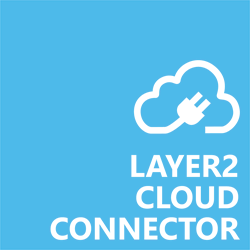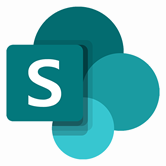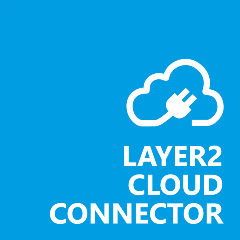HOW TO CONNECT POSTGRESQL WITH SHAREPOINT
This "how-to-connect" documentation will explain the initial configuration of an example connection from PostgreSQL to a SharePoint Online List in Office 365. We will be synchronizing data stored in PostgreSQL. This guide presupposes that you have installed the Layer2 Cloud Connector and that you are familiar with its basic functionality. The Layer2 Cloud Connector User Documentation will provide you with all necessary information.
PostegreSQL to SharePoint tutorial
The following tutorial will show you how to connect PostgreSQL to SharePoint using Layer2 Cloud Connector. You can also find hints and known issues about connecting the two systems.
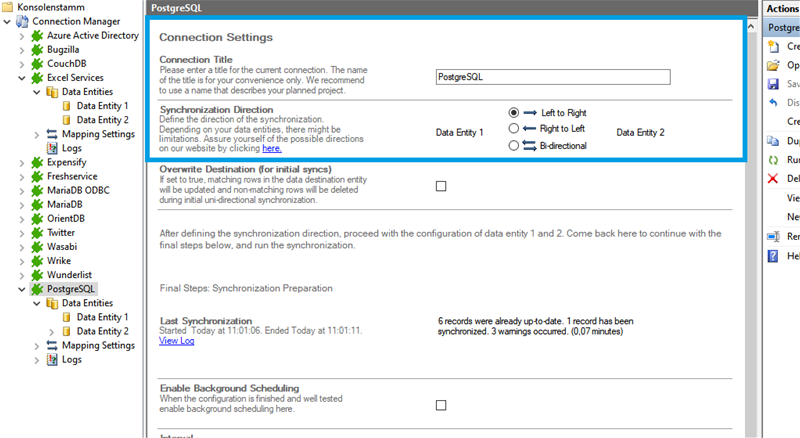
Step 1 - configure your PostgreSQL and Layer2 Cloud Connector
To connect to PostgreSQL you are going to need the IP address from the server, the database name, a username with the rights to access the database and the table you want to connect to. Get this information with your system administrator.
Create a new connection by using the Create New Connection option in the Actions pane (right-hand side). The new connection will appear at the bottom of the Connection Manager List (left-hand side). Click on your newly created connection to open the connection configuration settings.
Choose a meaningful name for your connection and replace the current "New Connection" Connection Title with it.
Connections to PostgreSQL can be bi-directional. An initial connection should always be uni-directional to assure that both data entities are identical before switching to bi-directional. Therefore, choose Left to Right as Direction. You can change this setting after your initial synchronisation finished successfully.
Step 2 - configure the Data Entity 1
We will now set up our Data Entities. Go to the data entity “Data Entity 1” to open the configuration settings.
Choose a Data Entity Title. It is recommended to give your entities meaningful names to maintain an overview when you decide to set up multiple connections.
Select the Data Provider for PostgreSQL from the data provider list. You can search for PostgreSQL by typing into the selection box.
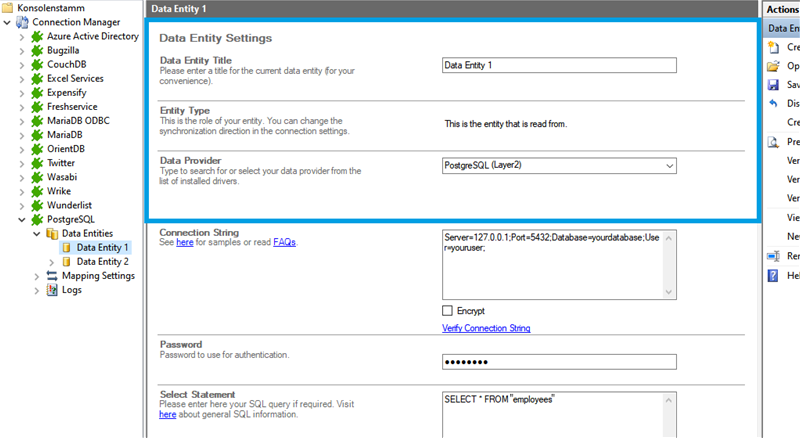
Server=127.0.0.1;Port=5432;Database=yourdatabase;User=youruser;
- "Server=yourserveripaddress;" this property defines the IP address from the PostgreSQL server.
- "Port=5432;" this property must point to the port the server is listening to. The default value is 5432.
- "Database=yourdatabase;" this property must be set to the database name you want to connect to.
- "User=youruser;" this property must be set to a user with rights to connect to the database.
For the Connection String, we need the information mentioned above. You can copy the below connection string and adjust it to match your gathered information. Use the Verify Connection String option to evaluate if the provided connection string is valid.
Enter the user account's password into the Password field. The field masks the value for better security.
The Select Statement text box is used to define specific data queries. We will be gathering all data from our table "employees". You can copy the below select statement and adjust it to match your needs. Save your changes by using the right-hand pane option Save Changes.
SELECT * FROM "employees"
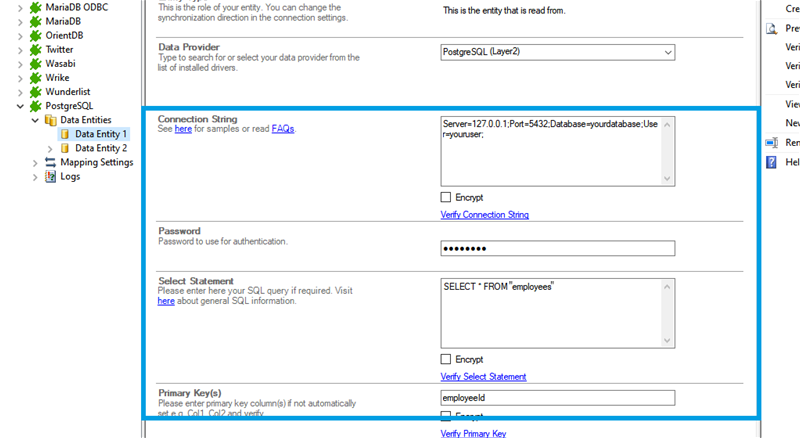
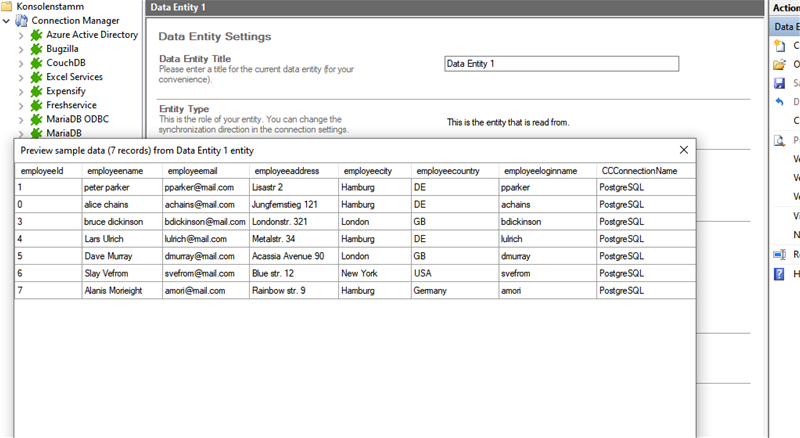
To check if all necessary columns are received, you can use the Preview Data option on the right-hand pane which will provide you with a pop-up window showing your sample data from your PostgreSQL entity.
Step 3 - configure the data entity 2
We are going to send the data to a custom SharePoint Online list. It's required that you set up this list prior to the next steps. Your list should contain matching columns according to your source entity.
Use the left-hand pane to switch to the data entity "Data Entity 2". We will be using the Layer2 SharePoint Provider for this setup.
For more information about the SharePoint provider visit:
https://www.layer2solutions.com/support/cloud-connector-faqs/layer2-csom-sharepoint-ado-net-provider
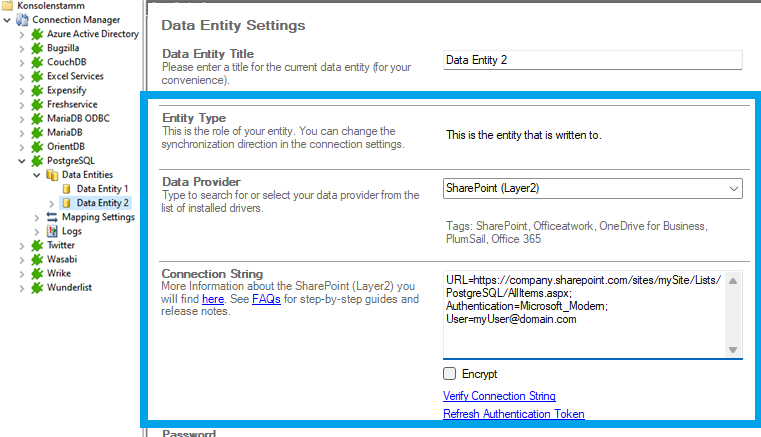
URL=https://your_custom_sharepoint_list_url/AllItems.aspx;Authentication=Microsoft_Modern;
- "URL=https://your_custom_sharepoint_url/AllItems.aspx;" this property defines the URL of your custom list that will be addressed.
- "Authentication=Microsoft_Modern;" this property will determine the authentication method used. Microsoft_Modern is the default authentication method to access Microsoft Office 365 / SharePoint Online and should work in most cases, even if the SharePoint site is connected to an ADFS. This authentication does not need any further connection string settings, other than the URL of the connected system.
- Optional: "User" parameter for information what account has been used for the authentication.
You can copy the Connection String which contains the minimum of required properties to connect to your custom SharePoint Online list.
Save your changes by using the right-hand pane option Save Changes.
In the next step, we will configure our mapping settings. Click on the Mappings option on the left-hand pane. If your fields from SharePoint are named identical to the fields from your source system, the Enable Auto Mapping option will match those columns. Disabling this option allows you to match your columns as needed. We enabled auto-mapping in our setup. Save your changes by using the right-hand pane option Save Changes.
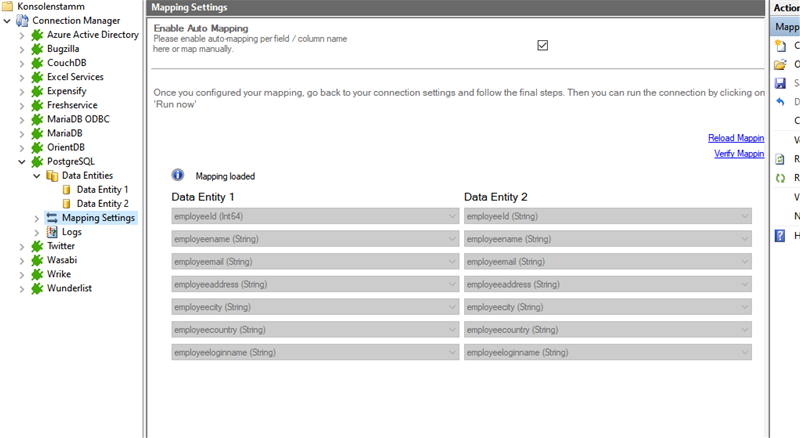
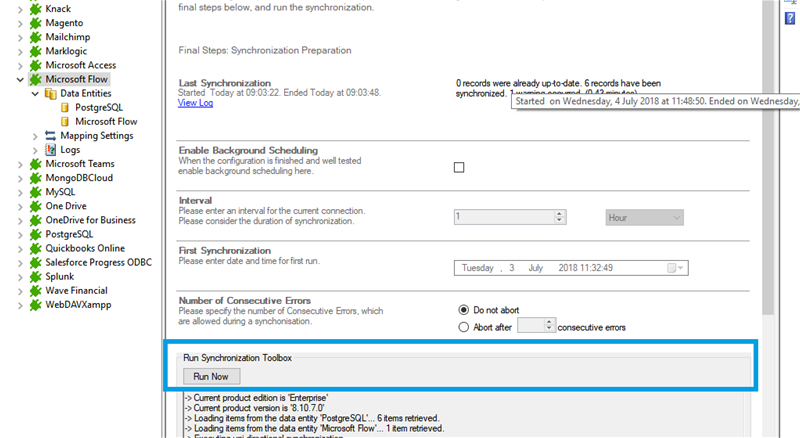
Step 4 - running your connection
To run your connection switch back to the main connection configuration node and use the Run Now Button located on the bottom of the setup page. The Run Synchronization Toolbox will also display the synchronization process.
This is a data preview of the information we have accessed in our source entity.
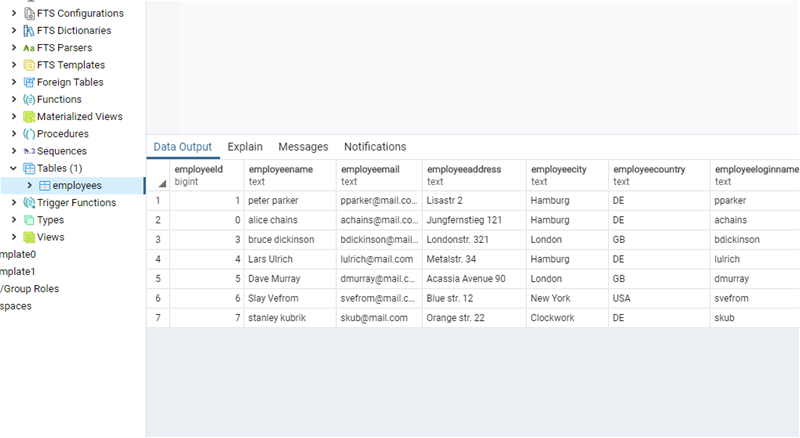
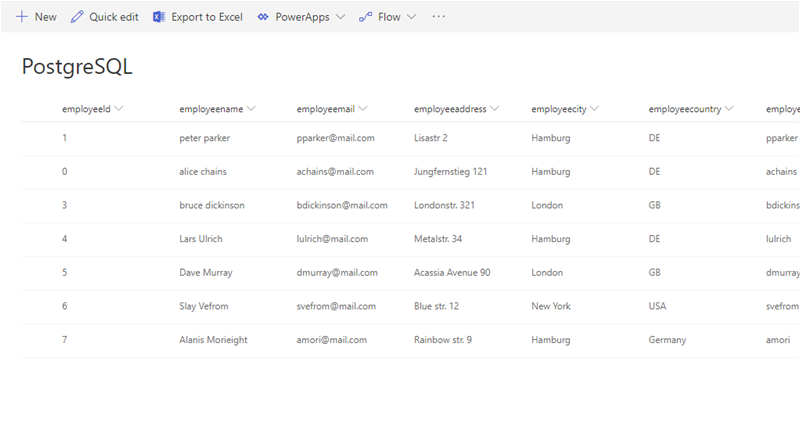
This will be the result in our SharePoint Online list after our initial successful synchronization.
If you want to use a bi-directional syncronization, you can now switch your connection direction after our first initial synchronization run finished successfully.
Hints and known issues about connecting PostgreSQL with SharePoint
Connection direction
As far as tested, this connection supports uni-directional as well as bi-directional synchronizations.
After adjusting the direction to bi-directional, you should check your Mapping settings again because some systems might include read-only columns that cannot be mapped directly.
We also recommend to choose a Conflict Resolution that matches your environments needs. You can find out more about the different conflict resolutions in our Layer2 Cloud Connector User Documentation.
Batch Operations
If you try to make multiple operations at the same time, you can get an error that batch operations not allowed. Set the parameter Other=’BatchSize=1’ in your connection string to avoid this error.
Select Statement
Depending on your PostgreSQL configuration, you might not need to set the table name in double-quotes.
Data integration and synchronization made easy
If you haven't already tried Layer2 Cloud Connector, it's time to take the first step towards effortless connectivity. Start your Layer2 Cloud Connector trial and experience how easy it can be to connect PostgreSQL to SharePoint.

